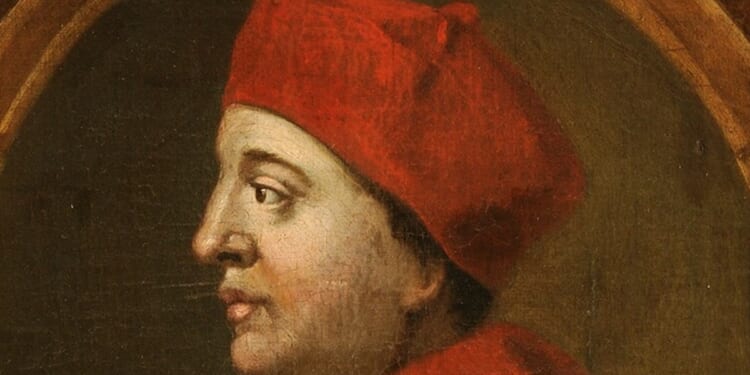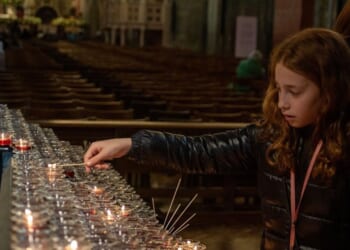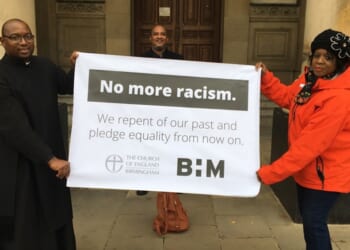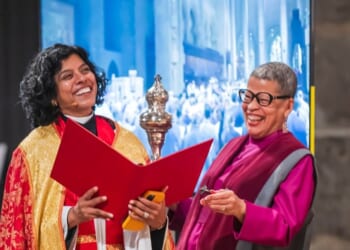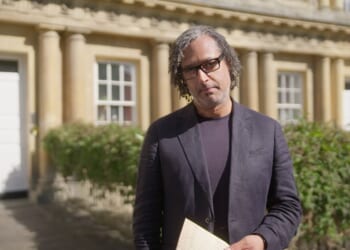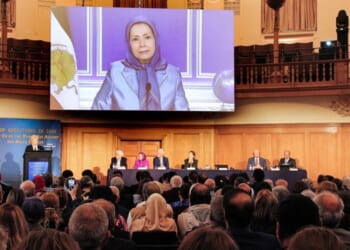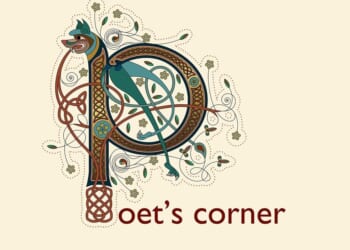CHRIST CHURCH, Oxford, has celebrated the 500th anniversary of its foundation, and encouraged a reassessment of its ill-fated Tudor founder, Cardinal Thomas Wolsey.
“Like all early Oxford colleges, we were established for both educational and religious purposes — and I’m proud that we’ve maintained this rhythm,” the Dean of Christ Church, the Very Revd Professor Sarah Foot, said.
“In offering witness to God in the midst of a vibrant, modern institution, we’re doing something for the whole country, as well as for the diocesan church which is centred here. While looking back on what’s been achieved at this unique institution, we’re also looking ahead at how we can strengthen it for the generations of students to come.”
The Dean was speaking at a conference in the Upper Library at Christ Church on 4 October. The event charted the college’s foundation by Cardinal Wolsey (1475-1530) and subsequent acquisition by King Henry VIII.
She said that the life of the college and cathedral still revolved around a morning-to-evening cycle of prayer, of which all students — religious or not — were made aware.
Professor Sarah Mortimer, a Fellow of Christ Church, said that Reformation historians were now freer from past confessional restraints and better able to appreciate the motivations of historic figures such as Wolsey. “Although we shouldn’t pass over Wolsey’s negative features at this time of commemoration, we’re more aware today of his positive commitments to education, public service and social mobility.
“Many of our own concerns today mirror those of Wolsey himself, such as how to enable people to express their potential in an institutional context, and how to respond to the synergies which arise between competing perspectives”.
Wolsey, the son of an Ipswich butcher, founded Cardinal College in July 1525, on the site of the ancient St Frideswide Priory, while he was Archbishop of York and Lord Chancellor.
The stone-built foundation, vast and sumptuous by contemporary standards, was intended to foster humanist learning. The Cardinal’s annual income has been estimated at £30,000, equivalent to £135 million today.
It was left unfinished when Wolsey was removed from office in 1529, after failing in negotiations to have the King’s marriage to Catherine of Aragon annulled by Rome. Henry VIII re-established the college as Christ Church in 1546, and designated its chapel as Oxford’s cathedral.
Two separate anniversary exhibitions show how architectural designs and books were collected from Rome and other European centres for the college, which had one of the world’s first professional librarians.
The displays include Wolsey’s crucifix, chalice, stationery box, and porridge bowl, together with building accounts, music sheets, and the red felt hat presented after he was made a cardinal in 1515.
They also feature an early 15th-century Book of Hours given to him in 1528 by Cardinal Lorenzo Campeggio when the latter visited England to hear Henry’s annulment petition for Pope Clement VII. Also on display is one of many later pamphlets that attacked the “prowde Cardinall” for alleged corruption and disloyalty.
Although Wolsey’s scholarship was lauded by Erasmus and other contemporaries, his official disgrace meant that no biography could be published for more than a century after his death.
The exhibitions show how views of Wolsey have evolved — from the scheming, self-serving conspirator portrayed by Shakespeare and other hostile writers to the more nuanced and thoughtful figure delineated by modern researchers.
They also highlight how Wolsey’s image has evolved in popular culture, from the power-hungry, gluttonous figure portrayed by Orson Welles in the Oscar- and BAFTA-winning 1966 film A Man for All Seasons to the sensitive and vulnerable statesman personified by Jonathan Pryce in the BBC TV dramatisation Wolf Hall.
“Wolsey was described by contemporary sources as charming and handsome — to have risen so far so fast, he must have had great ability and wisdom,” Christ Church’s museum curator, Jacqueline Thalmann, said.
“He was clearly an evocative, deeply interesting person; and, while this exhibition captures the villainous, Machiavellian figure previously planted in the British public mind, the time may well have come to reassess him.”
The Cardinal’s latest biographer, Glenn Richardson, agreed that efforts were needed to “unpick the real Wolsey” from the “tapestry of wickedness” created around him by his officially sanctioned Tudor detractors.
“Instead of a grand, aloof cardinal, we should view him as a hard-working statesman answering to a particular era, a man whose record transcends the failures of his time,” Professor Richardson said.
“In much of what he did, including founding Christ Church, his ambition outran his capacity. But this doesn’t mean he wasn’t genuine and didn’t achieve great advances. Had he survived, Christ Church could have become an extraordinary international centre even sooner than it did.”
Anniversary events at Christ Church include lectures, meetings, and performances uniting current and past students from across the globe.

